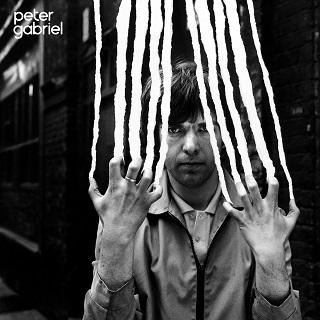 Peter gave his second solo album the same title as his first, with the idea that each new album would be akin to the latest issue of a magazine. Whatever the reason, this particular Peter Gabriel is usually referred to as Scratch or Fingernails, due to—you guessed it—the cover art. (You could even be clever and call it Atlantic to differentiate it from the first one, which was technically on Atco. Yet we digress.)
Peter gave his second solo album the same title as his first, with the idea that each new album would be akin to the latest issue of a magazine. Whatever the reason, this particular Peter Gabriel is usually referred to as Scratch or Fingernails, due to—you guessed it—the cover art. (You could even be clever and call it Atlantic to differentiate it from the first one, which was technically on Atco. Yet we digress.)He kept a few friends from the first album, such as Tony Levin on bass and Larry Fast on synthesizer, but handed the production and collaboration duties over to Robert Fripp (who considered it to be part of a trilogy with his own solo album and a project he was concurrently pursuing with Daryl Hall of all people. And we’re digressing again). Even with the addition of such surprising names as Roy Bittan and Sid McGinnis, Fripp’s influence is pretty apparent throughout, spurring Peter into new areas.
“On The Air” tinkles in on a synth line before exploding into a rocking stomper. An excerpt from a never-realized longform piece, the lyrics effectively express the simultaneous feeling of power and futility of a lone broadcaster. Suddenly “D.I.Y.” interrupts, with its dropped beats and anthem for either punk rock or self-abuse. A swarm of insects introduces “Mother Of Violence”, co-written with his then-wife and delicately sung over tinkling piano and plucked acoustic. “A Wonderful Day In A One-Way World” is just a little too silly, incongruous in the wordplay and steel guitar, the latter of which fits better in the next song. With a mesmerizing mix of menace and lust, “White Shadow” succeeds despite some awful rhymes (“died” and “Kentucky Fried”? Ugh). Beginning with a similar synth wash as “On The Air”, the song travels through slowly rising inflections, anchored by Tony Levin’s wonderfully thudding bass, a few fake horn fanfares and finally a glorious Fripp solo.
Side two starts gently with “Indigo” (transformed from its original live incarnation as “Song Without Words” featuring wacky high-pitched voices), an alternatively melancholy and jaunty meditation on death. It’s followed by “Animal Magic”, which unfortunately demonstrates that he’s just not made for arena rock. Some trademark Frippertronics drive “Exposure”, over a pseudo-disco jam, which manages to stay interesting before “Flotsam And Jetsam” regurgitates some of the feel of “Indigo”, but with some nice Lennon slap-back echo. There’s another stab at a radio sound with the unfortunately dated “Perspective”, but the honking sax is nicely balanced by a completely out-of-place Fripp solo over the bridge. As before, the album closes on a sad note with the heartbreaking “Home Sweet Home”. Here a sax-heavy arrangement reminiscent of a Billy Joel album matches a suburban London lyric bleaker than any Kinks song, leading up to the ironic ending.
This edition of Peter Gabriel is probably best viewed as the parts being greater than the sum. Many of the tracks soar, but as a whole something’s missing. Still, while not as consistent as his first, the album does have, again, charms that reveal themselves with patience, and reward in the process. He would never again work at this speed.
Peter Gabriel Peter Gabriel (1978)—3½
When I was a kid that cover really freaked me out.
ReplyDeleteIt's still pretty freaky. He wouldn't get handsome for another ten years, and now he looks like Burl Ives. (I'll use that line again, you can be sure.)
ReplyDelete